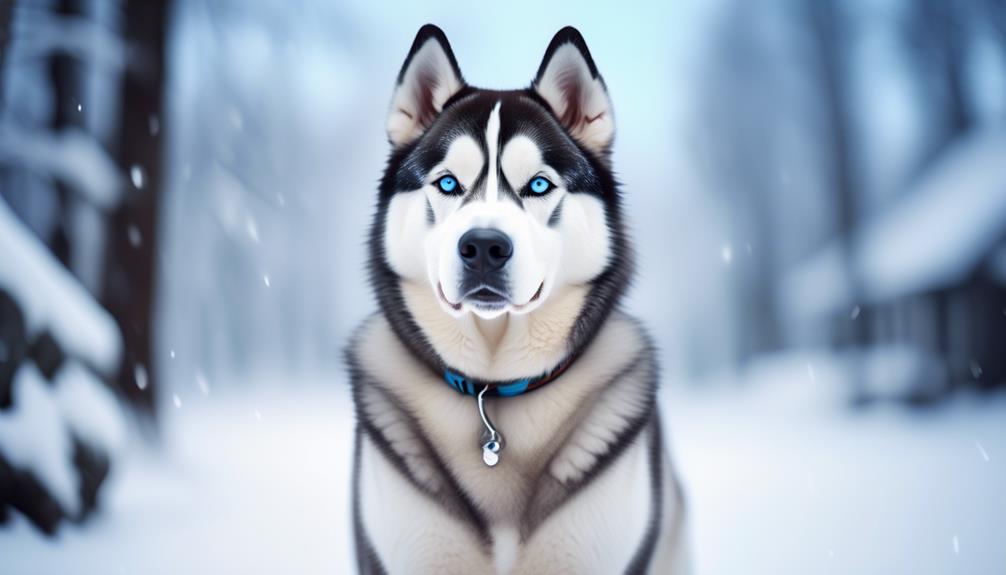
Are you ready to embark on an adventure into the fascinating world of Siberian Huskies? Get ready to discover a breed that will leave you in awe with its stunning appearance and captivating personality.
With their origins in the icy lands of Siberia, these dogs have evolved to become a true testament of strength and endurance. But that’s not all – there’s so much more to learn about these magnificent creatures.
So, brace yourself and prepare to be amazed as we unravel the mysteries of the Siberian Husky and uncover the unique characteristics that make them one of the most beloved breeds in the world.
Key Takeaways
- Siberian Huskies are a medium-sized, athletic, and intelligent breed with a beautiful, thick coat and striking facial markings.
- They require a clear leader and proper training to prevent destructive behavior when bored or under-exercised.
- Health clearances and regular veterinary care are important for this generally healthy breed, as they can be prone to certain health conditions such as hip dysplasia and cataracts.
- Socialization, obedience training, and exercise are crucial for a well-rounded Siberian Husky, making them suitable for active families who can provide the necessary time and attention.
Origin and History
The Siberian Husky has an intriguing origin and history. These beautiful dogs originated in Siberia and were bred by the Chukchi people for their endurance and ability to withstand harsh climates. They were primarily used as sled dogs, transporting goods and people across long distances. The Siberian Husky’s stamina and strength made them invaluable to the Chukchi people’s way of life.
In the early 20th century, the breed gained international recognition when a team of Siberian Huskies led by Balto helped deliver life-saving medicine to Nome, Alaska during a diphtheria outbreak. This heroic feat solidified the breed’s reputation as hardworking and reliable.
Today, Siberian Huskies are beloved companions and continue to showcase their athletic abilities in activities like sledding, skijoring, and dog sports. Their fascinating origin and history make them a truly remarkable breed.
See another Dog breed profile.
Silken Windhound Dog Breed
Appearance and Coat
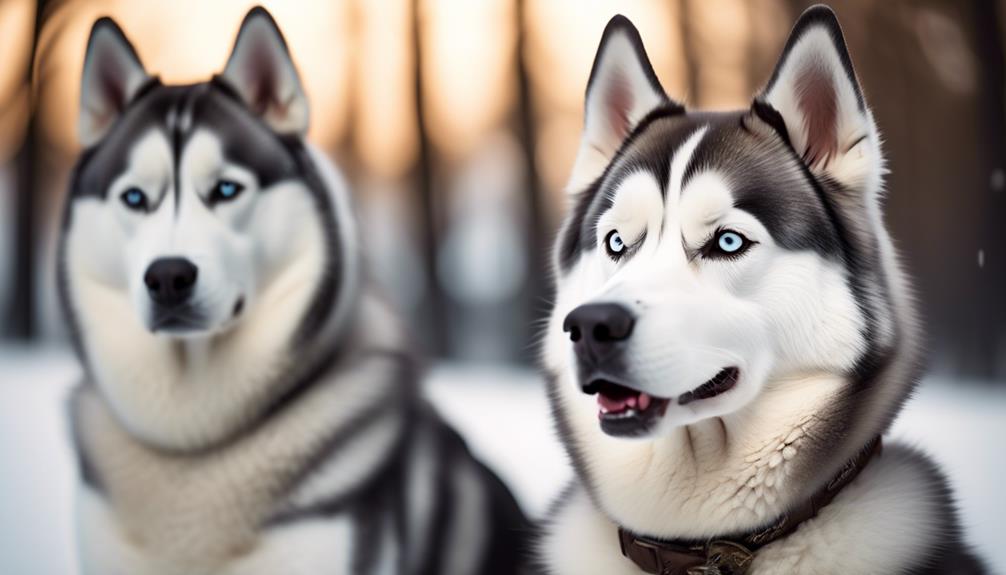
With their beautiful, thick coat and striking wolf-like looks, Siberian Huskies are truly captivating in appearance. These dogs have a double coat with medium-length hair. The top coat is straight, while the undercoat is soft and dense. The coat comes in various colors and markings, adding to their unique charm.
One of the most notable features of Siberian Huskies is their blue or multi-colored eyes, which are mesmerizing to look at. Additionally, they often have striking facial masks that further enhance their wolf-like appearance.
It’s important to note that Siberian Huskies shed a lot, especially during spring and fall when they blow their coats. Regular brushing can help prevent matting and excess hair on furniture.
Size and Lifespan
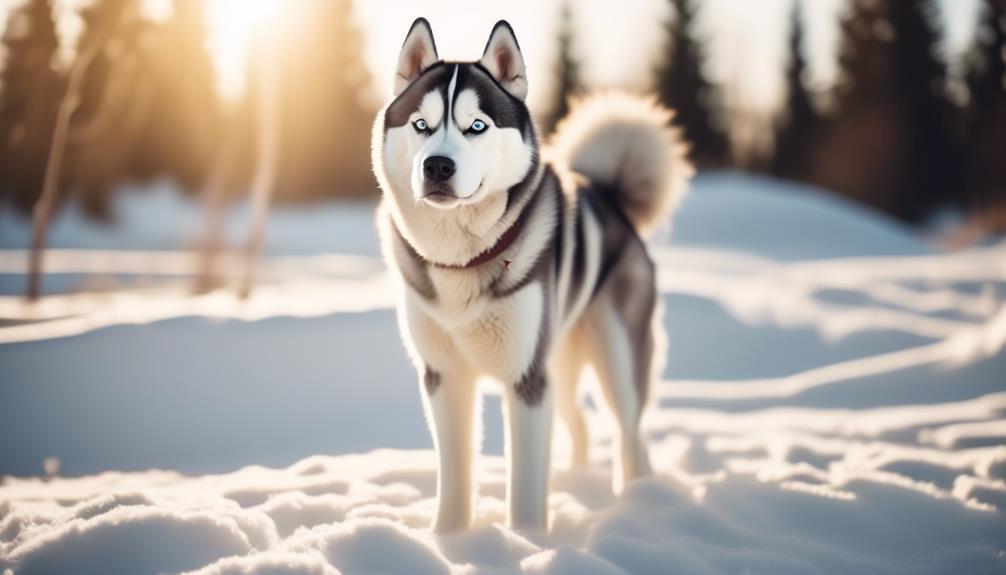
Moving on to the next aspect of Siberian Huskies, let’s now explore their size and lifespan.
Siberian Huskies are medium-sized dogs, standing at a height of 20 to 24 inches at the withers. Females typically weigh between 35-60 pounds, while males weigh between 45-70 pounds.
In terms of lifespan, Siberian Huskies generally live for 12 to 14 years. It’s important to note that individual dogs may vary, and factors such as genetics, diet, exercise, and overall health can influence their lifespan.
To ensure that your Siberian Husky lives a long and healthy life, providing them with proper care, exercise, and a balanced diet is essential. Regular veterinary check-ups and addressing any health concerns promptly can also contribute to their overall well-being.
Temperament and Training
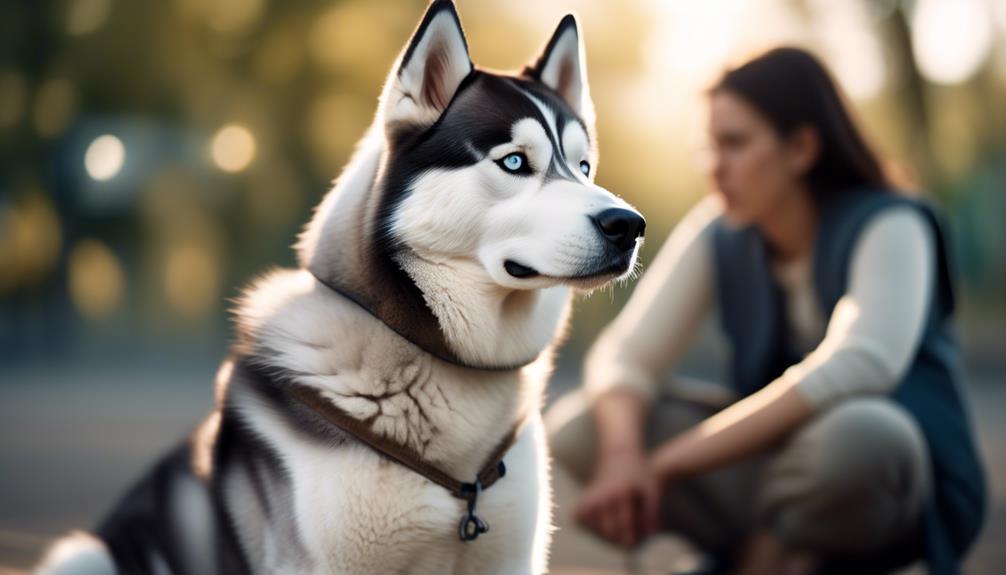
When considering the temperament and training of a Siberian Husky, it’s important to understand their unique characteristics and needs. Here are some key points to keep in mind:
- Huskies are pack dogs and need a clear leader. Training should establish your leadership role and provide them with structure.
- They can be mischievous and playful, enjoying activities like digging and exploring. Be prepared for their energetic nature.
- Huskies have a strong prey drive towards small animals, so caution is needed when introducing them to other pets.
- They don’t bark much but enjoy howling, which can be quite enchanting.
- Huskies can be prone to destructive behavior when bored or not exercised enough, so regular exercise is crucial.
- Training classes, including obedience and socialization, are highly recommended to ensure a well-behaved and well-adjusted Husky.
Health and Care
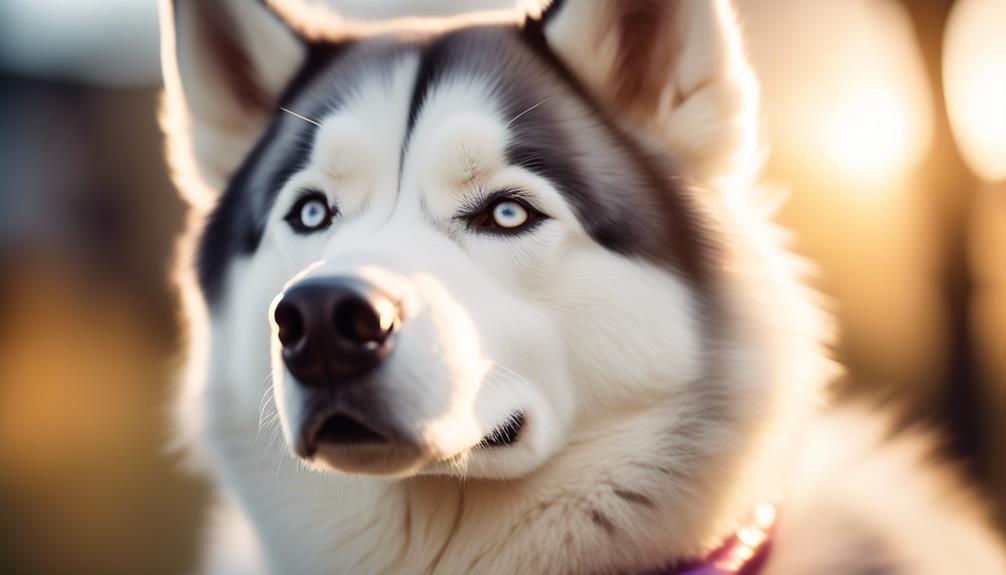
Now let’s shift our focus to the important topic of caring for the health and well-being of your Siberian Husky.
As a responsible owner, it’s crucial to prioritize your Husky’s health by providing regular veterinary check-ups and vaccinations. This breed is generally healthy, but they’re prone to certain conditions such as hip dysplasia, elbow dysplasia, hypothyroidism, von Willebrand’s disease, thrombopathia, cataracts, and Progressive Retinal Atrophy (PRA).
To ensure their optimal health, make sure to provide them with a balanced diet consisting of high-quality dry food. Additionally, regular exercise is essential for their physical and mental well-being, with a recommended daily amount of 30 to 60 minutes.
Finding a Siberian Husky
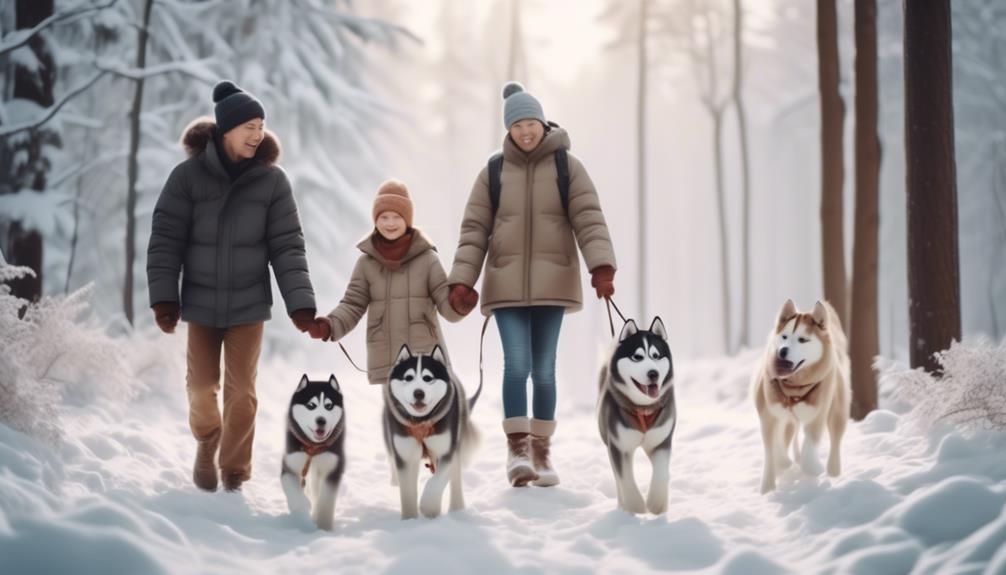
To find a Siberian Husky, prioritize adopting from rescue organizations or shelters for a responsible and compassionate choice. When searching for your new furry companion, consider the following options:
- Visit local rescue organizations and shelters to meet the Huskies in person. Picture yourself surrounded by a pack of energetic and friendly Huskies, each with their unique coat colors and striking blue or multi-colored eyes.
- Contact national or local breed clubs, such as the Seneca Siberian Husky Club or the Siberian Husky Club of Greater Cleveland, to inquire about Husky rescue groups. Imagine the joy of providing a loving home to a Husky in need.
- Explore online resources like the Delaware Valley Siberian Husky Rescue or MaPaw Siberian Husky Rescue & Referral Service, Inc. Imagine the anticipation of scrolling through their websites and finding the perfect Husky for you.
Quick Facts and Fun Facts
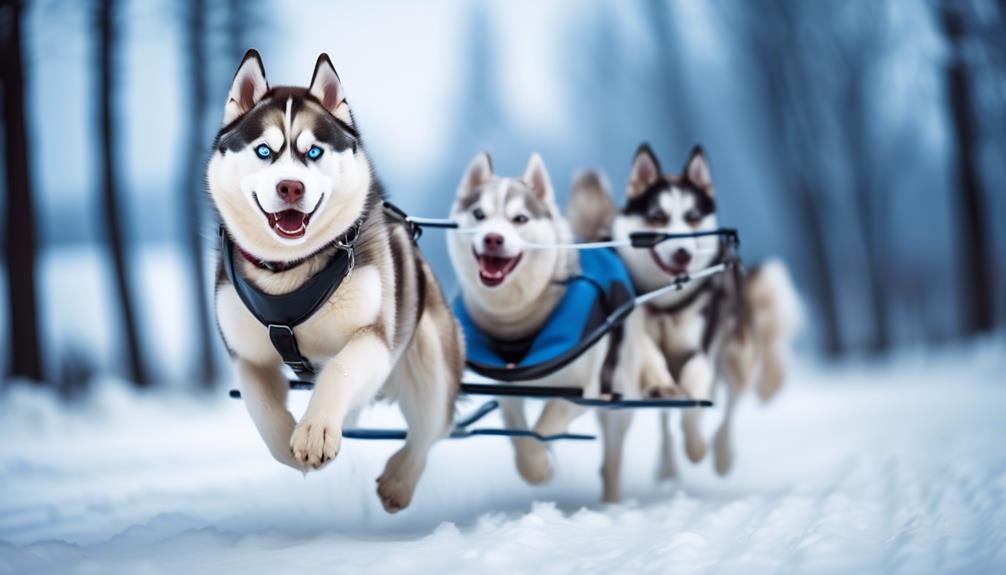
Get ready to discover some fascinating quick facts and fun facts about Siberian Huskies!
Did you know that the Siberian Husky originated in Siberia, Russia?
These medium-sized dogs have a beautiful, thick double coat with various colors and markings.
One of their most distinctive features is their striking blue or multi-colored eyes and wolf-like appearance.
Siberian Huskies are known for their friendly, outgoing, and intelligent temperament. They’re independent dogs that love to be around people and enjoy learning new things.
Fun fact: Balto, a Siberian Husky, became a national hero by delivering life-saving diphtheria antitoxins to Nome, Alaska. His statue stands in Central Park in Manhattan.
Siberian Huskies are also the mascot for the University of Washington’s football team.
With their endurance and love for activities like running, hiking, and pulling sleds, they make excellent companions for outdoor adventures.
Frequently Asked Questions
What Are Some Common Health Issues That Siberian Huskies May Experience?
Some common health issues that Siberian Huskies may experience include hip dysplasia, elbow dysplasia, hypothyroidism, von Willebrand’s disease, thrombopathia, cataracts, and Progressive Retinal Atrophy (PRA). Regular health clearances and veterinary check-ups are important for their well-being.
Are Siberian Huskies Good With Children and Other Pets?
Siberian Huskies are generally good with children and other pets, but supervision is important. Teach children how to approach and touch them properly. Socialization classes can help them get along with others.
How Often Do Siberian Huskies Need to Be Groomed?
Siberian Huskies should be groomed regularly to prevent matting and excess shedding. Brush them at least once a week, especially during spring and fall when they blow their coats.
Do Siberian Huskies Require a Lot of Exercise?
Yes, Siberian Huskies require a lot of exercise. They are athletic dogs that need daily physical activity to reduce boredom and unwanted behaviors. Make sure to provide them with plenty of exercise to keep them happy and healthy.
Are Siberian Huskies Suitable for Apartment Living?
Yes, Siberian Huskies are not suitable for apartment living. They need a yard with a high fence and plenty of exercise to reduce boredom. They are pack animals that thrive in a family or group environment.
Conclusion
In conclusion, Siberian Huskies are a captivating and unique breed with their stunning appearance and athletic abilities.
However, owning a Husky requires proper training, exercise, and leadership to prevent destructive behaviors.
With their intelligence and beauty, they make excellent companions for active individuals.
If you’re considering adopting a Siberian Husky, be prepared for the commitment and responsibilities that come with caring for this beloved breed.




